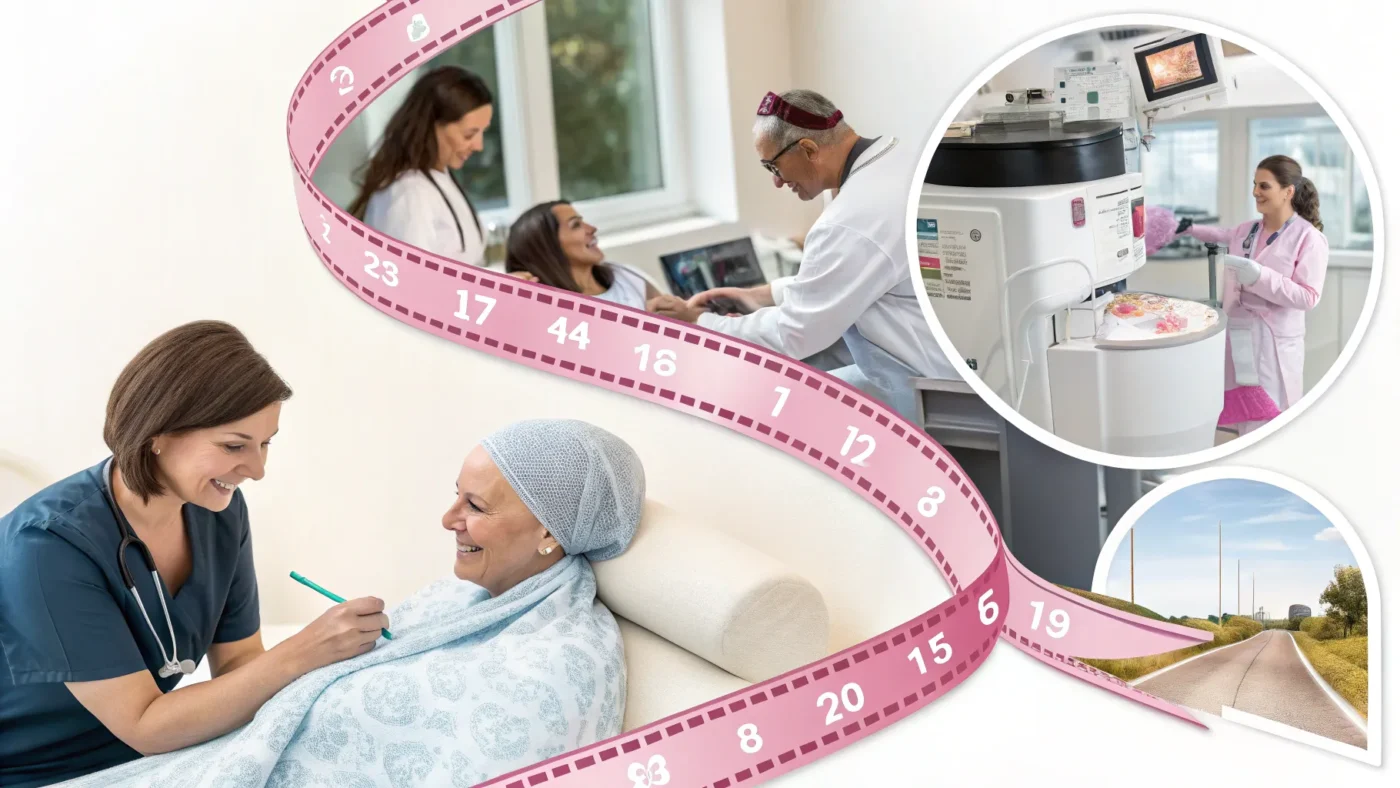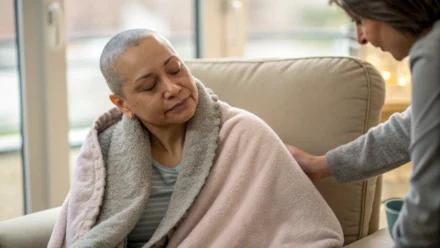I’m the Breast Cancer School for Patients, and in this guide I’ll walk you through the typical sequence and timeline of breast cancer care so you know what to expect—and can plan your life around it. Think of breast cancer treatment as a marathon: there are many steps, and each one takes time. Knowing the usual timelines helps you conserve energy, ask the right questions, and make better decisions with your care team.
Overview: How long does this take?
From first imaging to the end of active treatment, timelines vary by individual, but here are useful benchmarks to keep in mind:
- Average time from diagnosis to lumpectomy: about 32 days.
- Average time from diagnosis to mastectomy: about 40 days.
- Time from diagnosis to completion of final treatments: commonly 3–12 months (longer if chemotherapy is needed).
- Hormonal (endocrine) therapy for estrogen receptor–positive cancers is generally recommended for up to 10 years.
1. Finding the problem: breast imaging (1–3 weeks)
Most small breast cancers are detected on screening mammograms, sometimes with ultrasound or MRI. If you find a lump yourself and your physician orders a diagnostic mammogram or ultrasound, scheduling and results can take anywhere from a couple of days to a few weeks.
Tips:
- Ask your physician or their staff to help schedule imaging quickly—clinics often know how to expedite urgent tests.
- If you had a screening mammogram and are called back, try to schedule the diagnostic imaging as soon as possible.
2. Getting a diagnosis: the biopsy (2–14 days)
Biopsies are usually image-guided needle procedures (most commonly ultrasound-guided). Other types include stereotactic and MRI-guided biopsies. Scheduling a biopsy can take several days; pathology results commonly take a few days after the specimen is obtained.
Practical suggestions:
- Give the radiologist or surgeon your cell number and ask them to call you directly with results—ask permission for a voicemail if you won’t answer. This can significantly speed up your knowledge of the diagnosis.
- Request a copy of your initial biopsy report (often available in 2–3 days) and the final pathology with receptor status when ready.
3. Planning surgery: lumpectomy vs. mastectomy (about 1–6 weeks after diagnosis)
Once diagnosis is made, you will typically see a breast surgeon for a consultation and to establish a surgical plan. The surgeon may also order additional imaging such as a breast MRI—especially for younger patients or when more detail is needed.
- Average time from diagnosis to lumpectomy: ~32 days.
- Average time from diagnosis to mastectomy: ~40 days (mastectomy planning often involves coordination with a plastic surgeon if reconstruction is planned).
Remember: surgery is usually the first step for early-stage disease, but there are situations where chemotherapy is given before surgery (neoadjuvant chemotherapy)—particularly for triple-negative or HER2-positive cancers. Your team will discuss the pros and cons with you.
4. Chemotherapy: preparation and duration (preparation 10–14 days; treatment often 3–4 months)
If chemotherapy is recommended, you will meet a medical oncologist and may need additional staging scans (CT, bone scan, PET) and possibly an implanted venous access device (port). These steps commonly take about 10–14 days to arrange.
How long does chemo last?
- Standard courses of chemotherapy for early breast cancer often run about 3–4 months, though regimens vary—some are shorter, some longer.
- Certain targeted or maintenance medications may be given for a year or more.
- Most women with early-stage breast cancer do not require chemotherapy; if your tumor is ER-negative or HER2-positive, chemotherapy is more likely to be part of your plan.
Note: Chemotherapy can lengthen the overall timeline of treatment significantly; think of it as the most time-intensive part of the marathon if it’s recommended for you.
5. Radiation therapy: timing and typical length (4–6+ weeks)
Radiation is commonly given after lumpectomy (whole-breast radiation). Typical whole-breast courses last from about 4 to 6.5 weeks, delivered Monday through Friday.
Timing rules of thumb:
- After lumpectomy (if no chemo): wait ~3–4 weeks for surgical healing before starting radiation.
- If you have chemotherapy first, allow about 3–4 weeks after surgery to start chemo, and then wait about one month after completing chemotherapy before beginning radiation so your immune system can recover.
- After mastectomy, if radiation is recommended, you typically begin radiation once you have healed from surgery and any drains are removed; a typical post-mastectomy radiation course is around six weeks.
Radiation treatments are daily but relatively quick each session. Try not to interrupt a radiation schedule for vacations—consistency is important for effectiveness.
6. Hormonal (endocrine) therapy: long-term protection (starts after chemo/radiation)
If your tumor is estrogen receptor–positive (ER+), hormonal therapy (estrogen-blocking medications) reduces the risk of recurrence. Historically we advised five years of therapy; current practice often recommends up to 10 years for additional benefit.
Key points:
- Begin hormonal therapy after you finish radiation or chemotherapy (if you’re receiving either).
- Hormonal therapy is a long-term treatment—plan for years of medication and follow-up.
Practical tips to speed things up and protect your energy
- Ask for help from a patient navigator if available in your community—navigators can expedite scheduling and tests.
- When you have tests or procedures scheduled, request fast-track appointments and ask clinicians to call results promptly.
- Collect copies of your reports: biopsy pathology in a few days, and final surgical pathology (with receptor results) within a couple of weeks.
- Recognize this is a marathon: conserve emotional and physical energy so you can participate fully in decision-making throughout treatment.
Conclusion
Treatment for breast cancer unfolds in predictable stages—imaging, biopsy, surgery, possible chemotherapy, radiation, and long-term hormonal therapy when indicated. Average timings (diagnosis to surgery, length of chemo, weeks of radiation) are helpful guides, but your personal plan will be tailored to the specifics of your disease and goals.
Take your time to learn about your cancer, ask questions of your team, and use available resources (physicians, patient navigators, and educational programs) to become the best advocate for your care. You have plenty of time to make good decisions—use it wisely.
For more detailed questions to bring to your next doctor visit and lessons about each step, register with the Breast Cancer School for Patients.











Leave a Comment